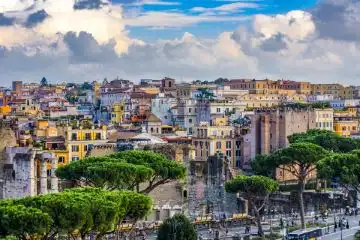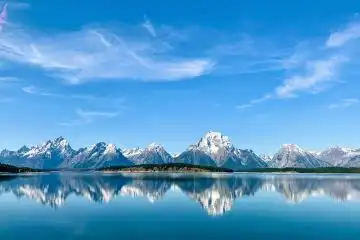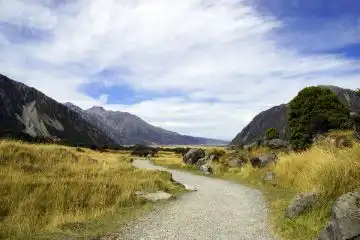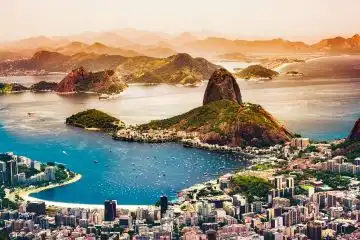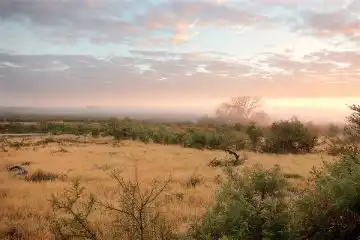Feel the beauty of Vatican City and renaissance art in Rome Italy
Rome, often described as the world's greatest open-air museum. The Vatican City and renaissance art in Rome are among its most remarkable gifts to the world. Rome invites travelers into its layers of history, spirituality, and artistic legacy. There, religion and creativity further merge in powerful and awe-inspiring ways. As the heart of Catholicism and a cradle of the Renaissance, the Eternal City offers various experiences. That meanwhile stir the soul, challenge the intellect, and delight the senses. In this detailed travel guide, You will explore the most breathtaking masterpieces, sacred landmarks, and tranquil spaces. That further define the Renaissance journey in the capital of Italy.
St. Peter's Basilica: Spiritual and Artistic Marvel
No trip to Vatican City and renaissance art in Rome is complete without entering the majestic Saint Peter's Basilica. Towering over Saint Peter's Square, this is firstly a sacred site. That is both a place of worship and a showcase of Renaissance brilliance. It is designed by great masters for example Bramante, Michelangelo, and Bernini. The basilica further embodies Renaissance ideals of harmony, symmetry, and grandeur. Inside, sunlight streams through vast domes and arches. It illuminates marble sculptures and golden altars. Michelangelo's Pietà, housed just beyond the entrance, reveals the extraordinary emotion. That Renaissance art could capture in cold stone. Climbing to the top of the dome, rewards you with a panoramic view of Rome. That meanwhile rivals any postcard.
The Vatican Museums Celebrate Human Artistic Brilliance
The Vatican Museums house one of the largest and richest art collections in the world. That are amassed over centuries by popes and church patrons. Walking through the corridors feels like traveling through time. They goes further from ancient Roman sculptures to Renaissance frescoes and tapestries. Visitors will marvel at the ornate Gallery of Maps and vibrant tapestries in the Hall of the Pontiffs. Each room tells a part of the larger story of European art. Along with Rome, one can explore top historical temples in Kyoto also. These museums are not only repositories of objects but also living narratives of cultural evolution. To fully appreciate their depth, consider a guided tour that unpacks the stories behind each masterpiece. It meanwhile explains how the Catholic Church became a driving force of Renaissance patronage.
The Sistine Chapel - Michelangelo's Monumental Vision
Perhaps no work better symbolizes the genius of the Renaissance than the ceiling of the Sistine Chapel. Painted by Michelangelo between 1508 and 1512, this astonishing fresco stretches over 5000 square feet. It firstly depicts scenes from the Book of Genesis. Watch the famous image of God reaching out to Adam. It meanwhile captures a dramatic moment of divine creation and human awakening. Behind the altar, Michelangelo's Last Judgment stuns viewers with its scale and intensity. That further illustrates the power of redemption and damnation. Visiting this sacred space is more than sightseeing. It is a contemplative experience that links art to theology, narrative to emotion.
Raphael's Rooms - Intellectual Harmony in Paint
Tucked inside the Vatican Museums are the Raphael Rooms, originally the papal apartments. They are now one of the most exquisite spaces to view Vatican City and renaissance art in Rome Italy. Raphael's frescoes, particularly The School of Athens, express the Renaissance commitment to classical learning and philosophical dialogue. In this famous painting, ancient philosophers like Plato and Aristotle appear with the faces of Renaissance artists. That meanwhile symbolizes the fusion of past and present. The balance of architectural space, use of perspective, and philosophical depth make the Raphael Rooms an ideal stop. It's perfect for those eager to understand how art reflected and shaped the intellectual movements of the time.
Castel Sant'Angelo: Historic Fortress of Artistic Elegance
Just outside Vatican City lies Castel Sant'Angelo, a cylindrical fortress originally built as a mausoleum for Emperor Hadrian. Over the centuries, it evolved into a Renaissance stronghold. That is firstly connected to the Vatican via the hidden Passetto di Borgo. The structure's interior includes opulent papal apartments adorned with frescoes and furniture from the Renaissance era. They comes along with galleries showcasing armor, weapons, and religious relics. From the rooftop, you're treated to stunning views of the Tiber River and Rome's skyline. Castel Sant'Angelo bridges the gap between imperial Rome and the spiritual power of the Vatican. Above all, it offers a vivid context for the rise of the Renaissance.
The Vatican Gardens Reflect Divine Natural Harmony
Amidst the grandeur of churches and galleries, the Vatican Gardens offer a quiet refuge. They further offer a different kind of beauty. These private gardens were landscaped during the Renaissance. They meanwhile reflect the ideals of balance, order, and divine harmony. Pathways wind through manicured hedges, fountains, and pavilions. Many of them adorned with religious symbolism and classical statues. Access is limited to guided tours, preserving the gardens' serenity. Strolling through these green spaces reveals how Renaissance thought extended beyond painting and sculpture into garden design. That meanwhile celebrates both nature and God's creation.
Santa Maria del Popolo Reveals Renaissance Devotion
Standing guard at Rome's northern entrance, the Basilica of Santa Maria del Popolo. It is a compact yet profound expression of Renaissance devotion. Its modest façade conceals chapels filled with works by Bernini, Raphael, and Caravaggio. The Chigi Chapel was designed by Raphael and later enhanced by Bernini. It firstly presents intricate mosaics and architectural flourishes that echo the broader artistic ambitions of the time. On your journey to explore Vatican City and renaissance art in Rome, it is a must visit. Caravaggio's dramatic paintings in the Cerasi Chapel is though more Baroque in style. But, it represents the transitional power of art rooted in Renaissance foundations. This church is often quieter than other sites, further making it perfect for reflection.
San Luigi dei Francesi Shows Caravaggio's Legacy
A short walk from Piazza Navona brings you to San Luigi dei Francesi. It's a 16th-century church that holds some of Caravaggio's most powerful works. His triptych depicting the life of Saint Matthew uses light and shadow to amplify emotion and realism. No doubt, Caravaggio belongs to the Baroque period. But, his grounding in Renaissance technique is evident in his use of perspective and anatomy. These paintings mark a moment of artistic transition. They further serve as essential viewing for anyone tracing the evolution of Renaissance art in Rome.
Vatican Necropolis - Echoes of Early Christianity
Beneath Saint Peter's Basilica lies the Vatican Necropolis. It's a sprawling network of tombs further dating back to the first centuries of Christianity. This underground site is firstly believed to include the grave of Saint Peter. It is accessible only through special permission and guided tours. Descending into these catacombs connects you with the origins of the Church. That meanwhile set the stage for the later glory of Renaissance Rome. The frescoes and burial structures show how art, even in its earliest Christian forms, was a crucial tool for expressing faith and identity.
Villa Farnesina - The Renaissance Meets Romance
Located across the river in Trastevere, Villa Farnesina is a Renaissance villa commissioned by a wealthy Sienese banker. Its walls are adorned with frescoes by Raphael and his pupils. They firstly depict scenes from classical mythology with grace and sensuality. Unlike the Vatican's religious works, these images celebrate love, beauty, and human emotion. With them, they demonstrate the breadth of Renaissance art's themes. The villa's architecture, gardens, and interior design meanwhile create an immersive environment. That further captures the spirit of Renaissance humanism and refinement.
Galleria Borghese Displays Renaissance and Baroque Masterpieces
Though not within Vatican City, the Galleria Borghese offers another compelling chapter in Rome's artistic heritage. Nestled in the Borghese Gardens, the gallery holds masterpieces by Bernini, Raphael, Titian, and other Renaissance luminaries. The museum's intimate scale and curated layout allow for deeper engagement with the artworks. Visitors can admire Bernini's lifelike sculptures for example Apollo and Daphne. They can also ponder the soft beauty of Raphael's portraits. Above all, the experience is both personal and profound. That reinforces the idea that Vatican City and renaissance art in Rome extends well beyond Vatican walls.
Tiber River Walk Showcases Art and Architecture
To end your journey of Vatican City and renaissance art in Rome, consider an early evening walk along the Tiber River. The stretch between Castel Sant'Angelo and Ponte Sisto firstly offers views of domes, bridges, and churches. That further echo Rome's artistic past. As the sun sets, golden light bathes the city, transforming ordinary buildings into works of art. The reflections on the river and the hush of twilight meanwhile invite contemplation. That is perhaps the perfect conclusion to your exploration of Vatican City and renaissance art in Rome, Italy. This path, simple yet scenic, mirrors the layered beauty of the city itself. That is at once ancient and eternally new.
Conclusion - Rome's Renaissance Wonder Awaits You
To truly feel the beauty of Vatican City and renaissance art in Rome is to immerse yourself in its story. That contains human vision, sacred purpose, and enduring elegance. It takes you from towering basilicas to quiet chapels and from bustling galleries to serene gardens. Above all, each site invites you to witness the rebirth of culture and spirit that defines the Renaissance. Rome does not only preserve history-but also lives it. Whether you are an art lover, spiritual seeker, or curious traveler, the Eternal City offers a timeless journey. That allows you to delve further into beauty and meaning.


